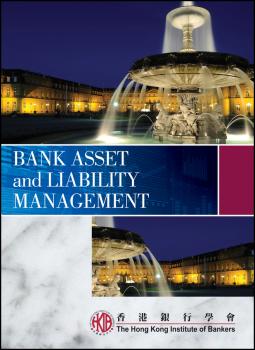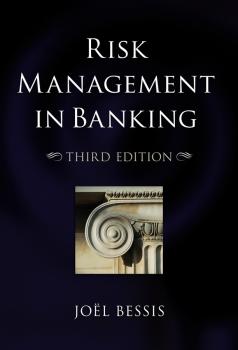ТОП просматриваемых книг сайта:















Банковское дело
Различные книги в жанре Банковское дело, доступные для чтения и скачиванияАннотация
An in-depth look at how banks and financial institutions manage assets and liabilities Created for banking and finance professionals with a desire to expand their management skillset, this book focuses on how banks manage assets and liabilities, set up governance structures to minimize risks, and approach such critical areas as regulatory disclosures, interest rates, and risk hedging. It was written by the experts at the world-renowned Hong Kong Institute of Bankers, an organization dedicated to providing the international banking community with education and training. Explains bank regulations and the relationship with monetary authorities, statements, and disclosures Considers the governance structure of banks and how it can be used to manage assets and liabilities Offers strategies for managing assets and liabilities in such areas as loan and investment portfolios, deposits, and funds Explores capital and liquidity, including current standards under Basel II and Basel III, funding needs, and stress testing Presents guidance on managing interest rate risk, hedging, and securitization
Аннотация
Эта книга раскрывает тайны современного банковского бизнеса: Прочитав ее, вы узнаете способы, с помощью которых банки вводят в заблуждение заемщиков, поймете, как обманывают должников коллекторы и антиколлекторы, узнаете, почему закон о банкротстве физических лиц вряд ли поможет должнику.
Почему социальная ипотека – зло? Что делать, если нечем платить кредит? Кто на самом деле виновен в том, что должники не возвращают кредиты? Читайте ответы на эти и многие другие вопросы в книге «Кредитные истории».
Весь путь от получения кредита до его погашения простым доступным языком.
Аннотация
Основная цель книги – способствовать тому, чтобы корпоративное обучение персонала банка методам взаимодействия с клиентом стало непременным элементом каждодневной управленческой практики. Содержание навыков банковских продаж представлено здесь предельно лаконично, информативно и практично. Сборник состоит из двадцати одного тренинга. Каждый тренинг содержит необходимую информацию по теме, а также упражнения, примеры из практики как предметы дискуссий, игры, вопросы для обсуждения в группе.
Тренинги составлены таким образом, чтобы их мог проводить руководитель клиентского подразделения банка, не являющийся профессиональным тренером. Сравнительно небольшие затраты времени на проведение одного занятия, автономность каждого тренинга, набор базовых коммуникативных навыков, прошедший проверку временем, направленность на специфику банковских продаж сделали данный сборник качественным инструментом в развитии реальной ориентированности персонала банка на удовлетворение запросов клиента.
Книга адресована руководителям клиентских подразделений банков, клиентским менеджерам, специалистам в области активных методов обучения персонала, а также всем, кто профессионально занимается переговорами с клиентами банка.
Аннотация
Обычно деятельность коммерческого банка подразделяется на деятельность, связанную с обслуживание клиентов, и внутреннюю деятельность. Считается, что банк должен ограничивать принимаемые на себя риски, для чего постоянно оценивать и контролировать риски совершаемых им банковских и внутренних операций. Однако возможна и иная более широкая трактовка рисков применительно к банковской деятельности. Можно считать, что любая деятельность коммерческой организации – это управление рисками. Доказательству этого утверждения и посвящена эта книга.
Аннотация
1990 год. Начало новой эпохи. Политические и экономические преобразования. Создание Центрального банка Российской Федерации. Перед вашим взглядом пройдут картины того неспокойного прошлого. Вы узнаете, как начинался кризис и как отчаянно пытались его предотвратить, как советские банкиры перенимали западный опыт, как крах зарубежных финансовых институтов отражался на банковской системе России. Книга будет интересна государственным и банковским служащим, юристам и бизнесменам, студентам экономических факультетов и всем, кто интересуется финансами.
Аннотация
See raamat on eelkõige nn vilepuhuja lugu, isiklik, kuid suure üldistusastmega triller. Dokumenteeritud algusest lõpuni. See on Skandinaavia pankade ning meie meedia, ametiühingute ja poliitilise eliidi korruptsiooni avaldamine pretsedenditul moel. Samuti on see Ida-Euroopa lugu ajast peale vabariikide iseseisvuse taastamist. Või siis kriitika selles kohta, kui vähe iseseisvust meil tegelikult on. Hannes Veskimäe töötas kümme aastat pankades. Ta räägib isikliku loo raha kummardamisest ning miks ta sellest võõrdus, kaitstes Eesti ettevõtjaid Swedbankis peale 2008. aasta kriisi ning luues Nordea panka ametiühingu töötajate kaitseks.
Аннотация
The future of banking is already here – are you ready? Bank 4.0 explores the radical transformation already taking place in banking, and follows it to its logical conclusion. What will banking look like in 30 years? 50 years? The world’s best banks have been forced to adapt to changing consumer behaviors; regulators are rethinking friction, licensing and regulation; Fintech start-ups and tech giants are redefining how banking fits in the daily life of consumers. To survive, banks are having to develop new capabilities, new jobs and new skills. The future of banking is not just about new thinking around value stores, payment and credit utility – it’s embedded in voice-based smart assistants like Alexa and Siri and soon smart glasses which will guide you on daily spending and money decisions. The coming Bank 4.0 era is one where either your bank is embedded in your world via tech, or it no longer exists. In this final volume in Brett King’s BANK series, we explore the future of banks amidst the evolution of technology and discover a revolution already at work. From re-engineered banking systems, to selfie-pay and self-driving cars, Bank 4.0 proves that we’re not on Wall Street anymore. Bank 4.0 will help you: Understand the historical precedents that flag a fundamental rethinking in banking Discover low-friction, technology experiences that undermine the products we sell today Think through the evolution of identity, value and assets as cash and cards become obsolete Learn how Fintech and tech “disruptors” are using behaviour, psychology and technology to reshape the economics of banking Examine the ways in which blockchain, A.I., augmented reality and other leading-edge tech are the real building blocks of the future of banking systems If you look at individual technologies or startups disrupting the space, you might miss the biggest signposts to the future and you might also miss that most of we’ve learned about banking the last 700 years just isn’t useful. When the biggest bank in the world isn’t any of the names you’d expect, when branch networks are a burden not an asset, and when advice is the domain of Artificial Intelligence, we may very well have to start from scratch. Bank 4.0 takes you to a world where banking will be instant, smart and ubiquitous, and where you’ll have to adapt faster than ever before just to survive. Welcome to the future.
Аннотация
Аргументированное и исчерпывающее исследование одной из самых загадочных, неоднозначных и проблемных сфер современной экономики – банковской системы. Почему возникли банки и как их появление способствовало промышленной революции и индустриализации? Чем занимается теневой банковский сектор? Как устроена работа банка, можно ли ему доверять, и есть ли у него будущее? Что такое цифровая революция и как она повлияла на современную финансовую систему? Почему возник финансовый кризис 2007–2008 годов, и какие уроки можно из него извлечь? Можно ли существовать без банков? Правда ли, что грядет конец эпохи банковского дела, и что будет потом? Эта книга будет одинаково интересна и финансистам, и социологам, и просто тем, кто хочет разораться в том, как устроена современная экономика, какую роль играют в ней банки и почему сейчас настало время масштабных изменений. © Jonathan McMillan, 2014 © З. Мамедьяров, перевод на русский язык, 2019 © А. Бондаренко, художественное оформление, макет, 2019 © ООО “Издательство Аст”, 2019 Издательство CORPUS ® © & ℗ ООО «Аудиокнига», 2018 Продюсер аудиозаписи: Татьяна Плюта
Аннотация
Never before has risk management been so important. Now in its third edition, this seminal work by Joël Bessis has been comprehensively revised and updated to take into account the changing face of risk management. Fully restructured, featuring new material and discussions on new financial products, derivatives, Basel II, credit models based on time intensity models, implementing risk systems and intensity models of default, it also includes a section on Subprime that discusses the crisis mechanisms and makes numerous references throughout to the recent stressed financial conditions. The book postulates that risk management practices and techniques remain of major importance, if implemented in a sound economic way with proper governance. Risk Management in Banking, Third Edition considers all aspects of risk management emphasizing the need to understand conceptual and implementation issues of risk management and examining the latest techniques and practical issues, including: Asset-Liability Management Risk regulations and accounting standards Market risk models Credit risk models Dependencies modeling Credit portfolio models Capital Allocation Risk-adjusted performance Credit portfolio management Building on the considerable success of this classic work, the third edition is an indispensable text for MBA students, practitioners in banking and financial services, bank regulators and auditors alike.
Финтех и «Вторая платежная директива» как фактор развития конкуренции в банковском секторе Европейского союза - Н. В. Мирзоян
Современная конкуренция. Научные статьиАннотация
В статье затрагиваются изменения банковского сектора, которые способствуют увеличению конкуренции на рынке банковских услуг между кредитно-финансовыми организациями и технологическими компаниями. Приведена классификация финтехорганизаций в зависимости от сторон, участвующих в сделке, отражаются наиболее важные составляющие «Второй платежной директивы». Указаны категории провайдеров платежных услуг, описаны три варианта стратегического развития банков. Сформулированы цели внедрения «Второй платежной директивы». Представлена позиция Банка России к директиве. Перечислены страны, в которых активно начали использовать API. Выделены основные последствия внедрения директивы для банков Европейского союза.










